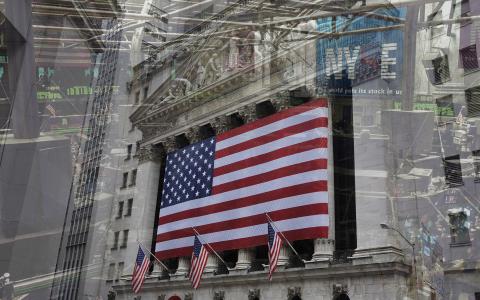
Anticipate a significant 30% drop in stock values, with a potential recovery ahead of the presidential election, followed by a plunge to levels unseen in the past 14 years, a market analyst has cautioned.
David Brady, a seasoned money manager and former forex trader, discussed on the "Thoughtful Money" podcast that the S&P 500 is likely to fall from current highs of over 5,000 points to a low of 3,500 points within the next 18 months. Brady, also the author of "The FIPEST Report," which provides insights on metals and mining sectors, emphasized that the stock market is considerably overpriced. He believes that the downside risks for investors currently overshadow the prospective gains, and a market correction appears inevitable.
Brady predicts that the Federal Reserve will intervene to mitigate the expected downturn by reducing interest rates and expanding its balance sheet. This action would likely be influenced by the Biden administration's desire for a robust stock market and economic environment as the November elections approach.
Nonetheless, Brady warns that any market recovery will be short-lived due to increasing domestic and international economic pressures.
"In the short term, expect a 20-30% decline; however, typical Federal interventions should drive a temporary market recovery," Brady stated. He anticipates a severe market downturn post-election due to various global and domestic economic challenges.
Reflecting on the current economic indicators, Brady pointed out the recent rise in inflation to 3.5% over the last two months, suggesting that the Federal Reserve might maintain elevated interest rates for an extended period. He also highlighted a rise in bankruptcies, auto-loan defaults leading to increased car repossessions, higher credit card delinquencies, and declining house prices.
"These are indicators that the economy is barely holding on," Brady remarked. He also noted the added strains from multiple foreign conflicts and pressures on the banking sector, contributing to a pessimistic economic outlook.
Brady suggested that the market might be reaching a plateau, with certain indicators signaling a time to exit. "If the S&P 500 dips below 5,000 points or if there is a deinversion of the yield curve, those will be my cues to exit," he explained.
He further elaborated that these factors might collectively precipitate the most significant overvaluation in the stock market since the Great Depression.
Looking beyond the election, Brady anticipates that the S&P 500 could plummet to around 1,000 points, effectively erasing over 14 years of gains and reverting to levels last seen in 2010. "An 80% correction could very well be in the cards this cycle," he concluded.
Brady's views are echoed by several other prominent market pessimists, including Michael Burry, known for his predictions during the 2008 financial crisis, Jeremy Grantham, co-founder of GMO, and renowned economist Gary Shilling.
Despite these grim forecasts, it's important to recognize that the U.S. economy and stock market have consistently outperformed expectations. The stock market reached new highs earlier this year, inflation has shown signs of subsiding, unemployment rates remain at near-historic lows, and economic growth has been solid.



